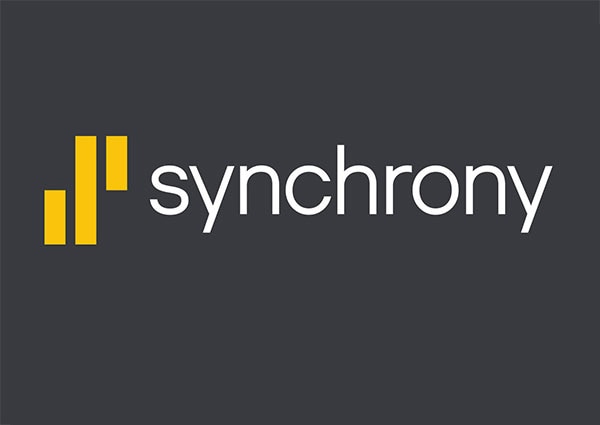Article
August 7, 2020, 9:40 AM EDT

Contactless Payments See Growing Demand
Read time: 5 minutes
Across the country, consumers are embracing touch-free payment options, from digital wallets and tap-to-pay, to QR codes and peer-to-peer payments. In fact, there has been a surge in adoption over the last four months due to Coronavirus. We reached out to a variety of experts to explain this dramatic shift toward contactless payments and why it’s not ending anytime soon. Retailers, restaurants and other businesses have jumped on board, providing a range of payment options and getting creative about payment offerings — from in-store and online to curbside.
As shoppers seek to make purchases with as few touch points as possible, demand has spiked for contactless payment options. But big questions remain: How should retailers respond? Will this trend continue post-coronavirus ?
We chatted (virtually, of course) with experts who brought diverse perspectives from across the payments landscape. Denise Leonhard, Commercial Officer of Venmo at PayPal; Mike Storiale, VP, Innovation Development at Synchrony; and Bijayta Berger, SVP, Digital Servicing at Synchrony, offered their take on the promising future of contactless payments.

Q1: Let’s start by talking about the surge in contactless payment use over these last few months. Were you surprised?
Bijayta Berger (Synchrony): While there certainly are so many difficult things going on right now, this is an exciting trend. Before coronavirus, shoppers moved slowly toward these technologies, but with new habits around social distancing and hand sanitizing we are seeing increased and accelerated adoption. Recent Synchrony research shows that 24 percent of customers are planning to use contactless cards more, a number that I think will continue to grow.
Denise Leonhard (Venmo): It’s kind of amazing — we have never been busier. Nobody was expecting this kind of incredible growth. On both the PayPal and Venmo sides, we’ve seen a dramatic increase in new accounts as well as overall usage, even more than on Black Friday or Cyber Monday on certain days, which is traditionally the most active time of the year.
Mike Storiale (Synchrony): People tend to adopt new tools that make their lives simpler. In the past, consumers had a general awareness of emerging payment options, but many couldn’t see what they added in terms of convenience. Coronavirus served as a catalyst; instead of learning to use a new technology to make transactions more convenient, it was for the sake of safety and self-preservation. That’s a compelling reason to change your routine.

Q2: How can businesses address this increased demand?
Berger: Each retailer is different, and there are a variety of options for them to choose from to make sure customers can pay the way they want to.
Businesses should start by examining the payment technologies they already have, and what their capabilities are. For example, Synchrony's SyPI coordinates with a retailer’s native apps and can implement a digital contactless option using bar codes. However, associate training on these new technologies is critical. Training can often get glossed over when shiny new technology is rolled out, but it’s a critical piece of consumer adoption.
Storiale: Businesses now have to make their customers feel comfortable shopping in their stores, and enabling as many digital payment options as possible will help. Pre- coronavirus, for example, there was nothing driving consumer demand for retailers to increase contactless or digital wallet acceptance. If one of the common mobile wallet options wasn’t enabled, consumers might be frustrated for a millisecond but then they would just pull out a card. Now they may be more reluctant to do that.
In addition, other high-touch industries outside of retail have had to come up with payment technologies that work for their business. Take auto service: Many businesses are implementing technologies that allow customers to select and pay for their service needs in advance with QR codes that the shop scans through the window upon arrival. You didn’t see that back in January, but they made that happen very quickly and consumers are going to expect the convenience to stick around.
Q3: Do you foresee any obstacles as the demand continues to grow?
Leonhard: We anticipate people coming on to these platforms that have never used digital payments. A recent AARP study shows that while younger adults are more likely than older adults to use peer-to-peer payment platforms, the 50+ crowd is also adopting P2P payments.
In addition to seeing an increase on the new account side, we have more engagement with longtime members. And we’re seeing people expand the creative ways they use PayPal and Venmo, including our Venmo community coming together to support each other amidst coronavirus with payments of goodwill and random acts of kindness.
Storiale: There’s always a learning curve when consumers try something new. With digital payments, for instance, people may have to add an app to their phone for the first time, or figure out where to wave their card near a contactless machine. That
could be a barrier, but once they overcome it, shoppers see the benefit. And right now, of course, there is an added push to adopt because it provides shoppers with additional safety and quicker service. In the future, that ease of payment will be a compelling reason to stick with the new habit.
Q4: Are there digital payments trends that we’re not seeing yet but could emerge as a result?
Leonhard: I think we’ll see more proximity payments, where people can quickly pay each other in the moment at the point of sale, such as by scanning a business’ Venmo QR code. Businesses and customers are finding creative use cases that I think will expand as more things reopen, including at places that might previously have only accepted cash, such as farmers markets or small businesses.
Q5: Do you think this consumer mindset will continue?
Leonhard: As economies open up, people will rely more on contactless pay tools, and I think it will create a lasting behavioral change. There are so many more use cases, so people are really starting to bring these tools into their daily lives.
Storiale: I think a lot of the new payment options will be here to stay. I, for one, am looking forward to going to a mall and walking around. The “treasure hunt” experience isn’t gone, but I also expect people will keep using curbside pickup, and they’ll want a contactless way to pay in advance. It’s a growing option for consumers, and businesses will find that it’s sustainable without replacing their channels, just as online shopping didn’t replace all physical retail.
Q6: How are you using contactless payments now that you didn’t anticipate?
Storiale: I never expected that I would be ordering from my local, small business ice cream shop on my phone. My family has come to love the curbside pickup of ‘make your own ice cream sundae’ kits.
Leonhard: I’ve been so impressed with the performers who have been live-streaming amazing music and including their Venmo and PayPal information. With a 2-year-old son at home, of course we have to keep him entertained, so we have happily sent them money through Venmo. I don’t think anyone was planning for those kinds of creative and fun use cases.
Berger: I thought shopping for clothes would be something I’d always do in person, but now I buy everything online. As long as brands have the right size and an easy return policy, I’m sure I will continue. If I had my way, I’d use contactless payment options for all of my subscriptions, movies, grocery delivery, small businesses and more!














